Jindong Tian
Air Quality Prediction with Physics-Informed Dual Neural ODEs in Open Systems
Oct 25, 2024
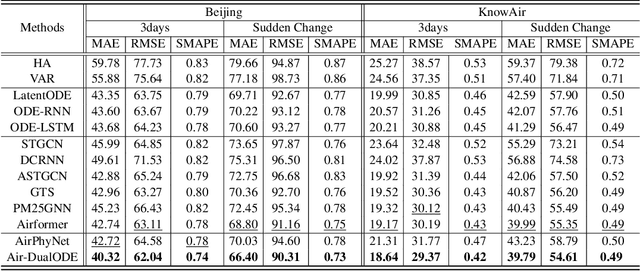
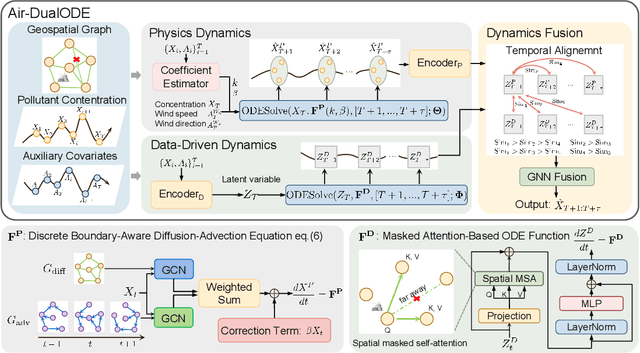
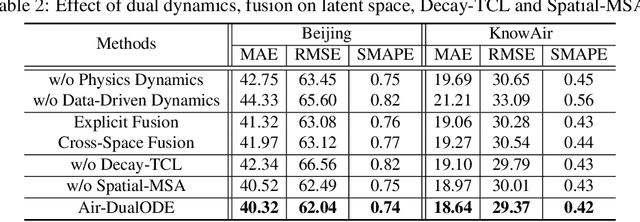
Abstract:Air pollution significantly threatens human health and ecosystems, necessitating effective air quality prediction to inform public policy. Traditional approaches are generally categorized into physics-based and data-driven models. Physics-based models usually struggle with high computational demands and closed-system assumptions, while data-driven models may overlook essential physical dynamics, confusing the capturing of spatiotemporal correlations. Although some physics-informed approaches combine the strengths of both models, they often face a mismatch between explicit physical equations and implicit learned representations. To address these challenges, we propose Air-DualODE, a novel physics-informed approach that integrates dual branches of Neural ODEs for air quality prediction. The first branch applies open-system physical equations to capture spatiotemporal dependencies for learning physics dynamics, while the second branch identifies the dependencies not addressed by the first in a fully data-driven way. These dual representations are temporally aligned and fused to enhance prediction accuracy. Our experimental results demonstrate that Air-DualODE achieves state-of-the-art performance in predicting pollutant concentrations across various spatial scales, thereby offering a promising solution for real-world air quality challenges.
Single-shot structured illumination microscopy
Jul 13, 2021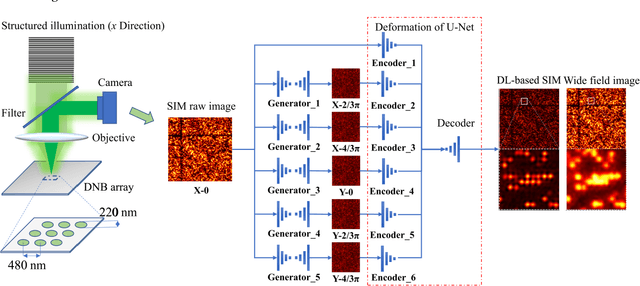

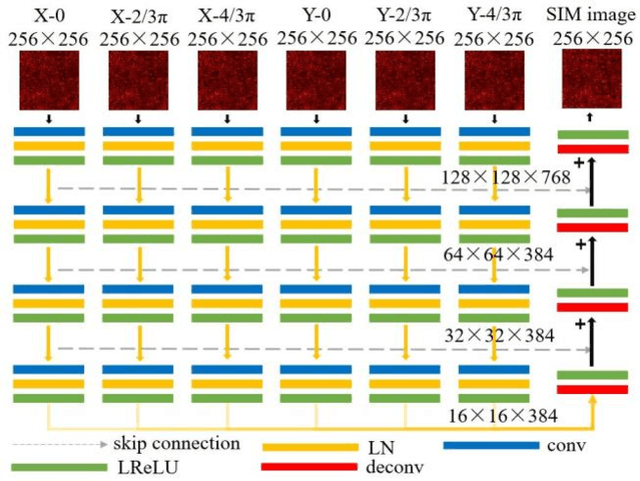
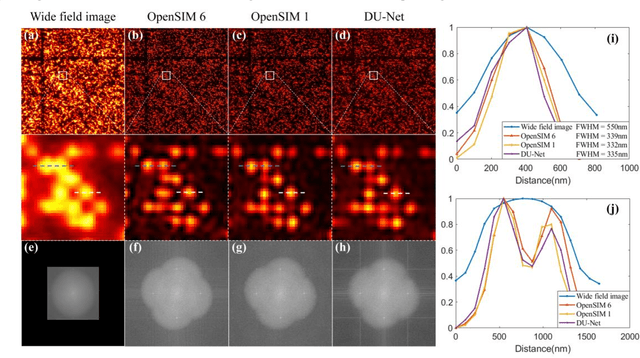
Abstract:Structured illumination microscopy (SIM) can double the resolution beyond the light diffraction limit, but it comes at the cost of multiple camera exposures and the heavy computation burden of multiple Fourier transforms. In this paper, we report a novel technique termed single-shot SIM, to overcome these limitations. A multi-task joint deep-learning strategy is proposed. Generative adversative networks (GAN) are employed to generate five structured illumination images based on the single-shot structured illumination image. U-Net is employed to reconstruct the super-resolution image from these six generated images without time-consuming Fourier transform. By imaging a self-assembling DNB array, we experimentally verified that this technique could perform single-shot super-resolution reconstruction comparing favorably with conventional SIM. This single-shot SIM technique may ultimately overcome the limitations of multiple exposures and Fourier transforms and is potentially applied for high-throughput gene sequencing.
 Add to Chrome
Add to Chrome Add to Firefox
Add to Firefox Add to Edge
Add to Edge